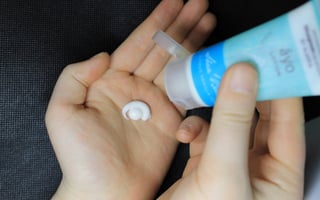Have you heard the story about the people stranded in Britain’s highest pub?
Who fancies a more positive story to look at this week?
After giving you our thoughts on the Heathrow shutdown and everything that has gone wrong at Tesla, we didn’t want to offer another crisis media management blog.
Instead, a brilliant bit of social media PR grabbed our attention.
Not got time to keep reading? Listen to the blog instead
And it stemmed from a football manager’s post-interview.
Now, football fans will know these interviews tend to be pretty routine affairs.
But not when Nathan Jones, the manager of Charlton Athletic, is involved.
The boss of the League One side used the interview to outline the commitment he wants from his players as the season approaches its finale.
"Going into eight weeks of your life now, where you sacrifice everything,” he said.
"You're not shopping tomorrow. Not bowling. Your diet's good."
And he added he expected the players’ partners to play their part.
He said: "If your wife or your girlfriend wants to go shopping, wants to do that, they have to make the sacrifices."
"It’s a massive sacrifice for us - to achieve something - because you can’t now go to Bluewater, walking around high-fiving and going to Costa Coffee when you should be resting."
Those comments grabbed the attention of the wider media.
There were also plenty of social media posts about the comments.
And the out-of-town shopping centre seized the PR initiative.
It took to its social media accounts with a video of staff searching for Charlton players visiting the centre, under the caption, “Nathan Jones, don’t worry we’ve got your back!”.
After searching the centre, it finished by wishing the team good luck for the rest of the season “from your friends here at Bluewater where there are definitely no Charlton players high-fiving.”
The post gained more than 6,000 likes on TikTok, a thousand likes on X and more than 900 reactions on Facebook.
@bluewater_shopping Nathan Jones, don't worry we've got your back! 🤫😉 @Charlton Athletic FC #bluewatershopping #football #charltonathletic #cafc #nathanjones ♬ original sound - Bluewater
And that, in turn, gained local media coverage.
It’s a lovely example of newsjacking - something we often discuss during our social media training and media skills training courses.
If you haven’t been on one of those courses, you might wonder what it means - it certainly sounds weird.
It is essentially about using trending topics and news stories to gain coverage, exposure, credibility and visibility for your organisation and placing it at the centre of the conversation.
It offers cost-effective and relatively simple PR quick wins to improve your brand image and potentially gain a competitive advantage.
There have been other notable examples already this year, including how Aldi responded to the story of the guests stuck in Britain’s highest pub during the snow.
The budget supermarket commandeered a farmer’s snowplough to deliver a ‘care package’, consisting of Malbec wine, sausages, toilet rolls and dog treats, together with board games to help pass the time during the snowy siege.
The Tann Hill Inn pub thanked the supermarket on social media. And brilliant media coverage ensued.
So, if you fancy coverage like that – and the social media reaction Bluewater has achieved – you might be wondering how best to do it.
Shall we have a look at some newsjacking tips from our training courses?
Crucial curiosity
You need a curious mindset to newsjack successfully.
You must keep a close eye on what is being reported in the news and discussed on social media about you and your industry.
And be able to react and respond rapidly if you feel you can weave your organisation into it, add insight and opinion, move a relevant story forward or spark debate.
The TRUTH acronym we use during our training is the perfect guide for exploring what newsjacking activity could work:
Topical – It needs to be about something people are talking about. Or that is trending.
Relevant – Is it relevant to the journalist and your audience?
Unusual – You need to offer something different – a new take, opinion or case study. Offering an agreement or repeating what is already known will not work. Go against the grain.
Trouble – Journalists like to sniff out trouble and controversy. It means your spokespeople could face tough questions. How could you answer them? Equally, the trouble element could be provided by offering a solution to a problem, as happened with Aldi and the story of the stranded pub guests.
Human – Tell us a human story. We are hardwired to love stories.
Organised
Looking at what is coming up can form a solid basis for newsjacking.
We held a newsjacking masterclass for members of our Media Team Academy.
And during that session, Victoria Smith, one of our expert tutors, said: “Big events, like royal weddings, also provide excellent opportunities for small businesses, like florists and dressmakers, to get themselves on air and offer an opinion – it doesn’t always have to be hard news.
“Think about what is coming up on the calendar over the next few months and how you would be able to contribute.
“There will be big events like Black History Month and Pride. But there will also be niche things like National Cheese Toastie Day, which offers opportunities for cheesemakers to get on air.”
If you are still using the platform, the #journorequests hashtag on X, previously known as Twitter, can offer insight into the future stories and features journalists are working on.
Watch out for pitfalls
As much as we love newsjacking and see it as a great way to remain in the news cycle, it is not risk-free.
Long sign-off processes can kill newsjacking.
The news moves ever more quickly, and attention quickly moves on to the next story.
It means you have a small window to be successful.
So, you must remove red tape, indecision and long sign-off processes from the equation to avoid wasted efforts.
This next bit may sound a little contradictory.
But despite what we have just said about pace, newsjacking must be strategic and done with sensitivity and taste.
Piggybacking off upsetting stories, controversies, climate disasters, and tragedies could put you in crisis media management mode. Similarly, if the narrative surrounding a story is sombre, take extra care before jumping in.
Newsjacking is also about quantity over quality. When you see some of the coverage it can generate, there can be a temptation to newsjack every story.
But that approach will quickly become tired and reduce your impact.
Finally, if you want to add humour, make sure it is funny.
The Bluewater video is funny.
But there have been plenty of examples of attempted humour in newsjacking backfiring and offending.
And you don’t want to join that list. Just like Bluewater with Charlton, we’ve got you.
Media First are media and communications training specialists with nearly 40 years of experience. We have a team of trainers, each with decades of experience working as journalists, presenters, communications coaches and media trainers.
Click here to find out more about our social media and media training.
Subscribe here to be among the first to receive our blogs.




